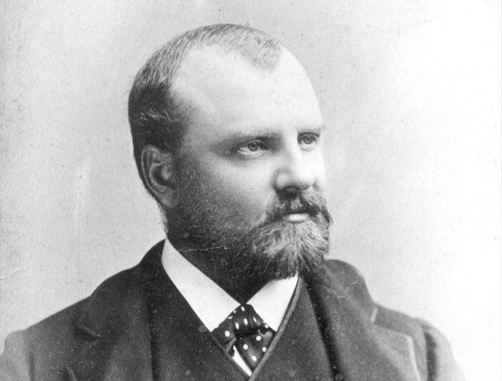
Writing in the Territorial Enterprise in 1863, Mark Twain claimed to have found the following letter atop Sugarloaf Peak, Nevada. It was addressed to Miss Mary Links of Virginia City from Solon Lycurgus, “law student, and notary public in and for the said County of Storey, and Territory of Nevada”:
To the loveliness to whom these presents shall come, greeting:–This is a lovely day, my own Mary; its unencumbered sunshine reminds me of your happy face, and in the imagination the same doth now appear before me. Such sights and scenes as this ever remind me, the party of the second part, of you, my Mary, the peerless party of the first part. The view from the lonely and segregated mountain peak, of this portion of what is called and known as Creation, with all and singular the hereditaments and appurtenances thereunto appertaining and belonging, is inexpressively grand and inspiring; and I gaze, and gaze, while my soul is filled with holy delight, and my heart expands to receive thy spirit-presence, as aforesaid. Above me is the glory of the sun; around him float the messenger clouds, ready alike to bless the earth with gentle rain, or visit it with lightning, and thunder, and destruction; far below the said sun and the messenger clouds aforesaid, lying prone upon the earth in the verge of the distant horizon, like the burnished shield of a giant, mine eyes behold a lake, which is described and set forth in maps as the Sink of Carson; nearer, in the great plain, I see the Desert, spread abroad like the mantle of a Colossus, glowing by turns, with the warm light of the sun, hereinbefore mentioned, or darkly shaded by the messenger clouds aforesaid; flowing at right angles with said Desert, and adjacent thereto, I see the silver and sinuous thread of the river, commonly called Carson, which winds its tortuous course through the softly tinted valley, and disappears amid the gorges of the bleak and snowy mountains — a simile of man! — leaving the pleasant valley of Peace and Virtue to wander among the dark defiles of Sin, beyond the jurisdiction of the kindly beaming sun aforesaid! And about said sun, and the said clouds, and around the said mountains, and over the plain and the river aforesaid, there floats a purple glory — a yellow mist — as airy and beautiful as the bridal veil of a princess, about to be wedded according to the rites and ceremonies pertaining to, and established by, the laws or edicts of the kingdom or principality wherein she doth reside, and whereof she hath been and doth continue to be, a lawful sovereign or subject. Ah! my Mary, it is sublime! it is lovely! I have declared and made known, and by these presents do declare and make known unto you, that the view from Sugar Loaf Peak, as hereinbefore described and set forth, is the loveliest picture with which the hand of the Creator has adorned the earth, according to the best of my knowledge and belief, so help me God.
Given under my hand, and in the spirit-presence of the bright being whose love has restored the light of hope to a soul once groping in the darkness of despair, on the day and year first above written.
(Signed) Solon Lycurgus



